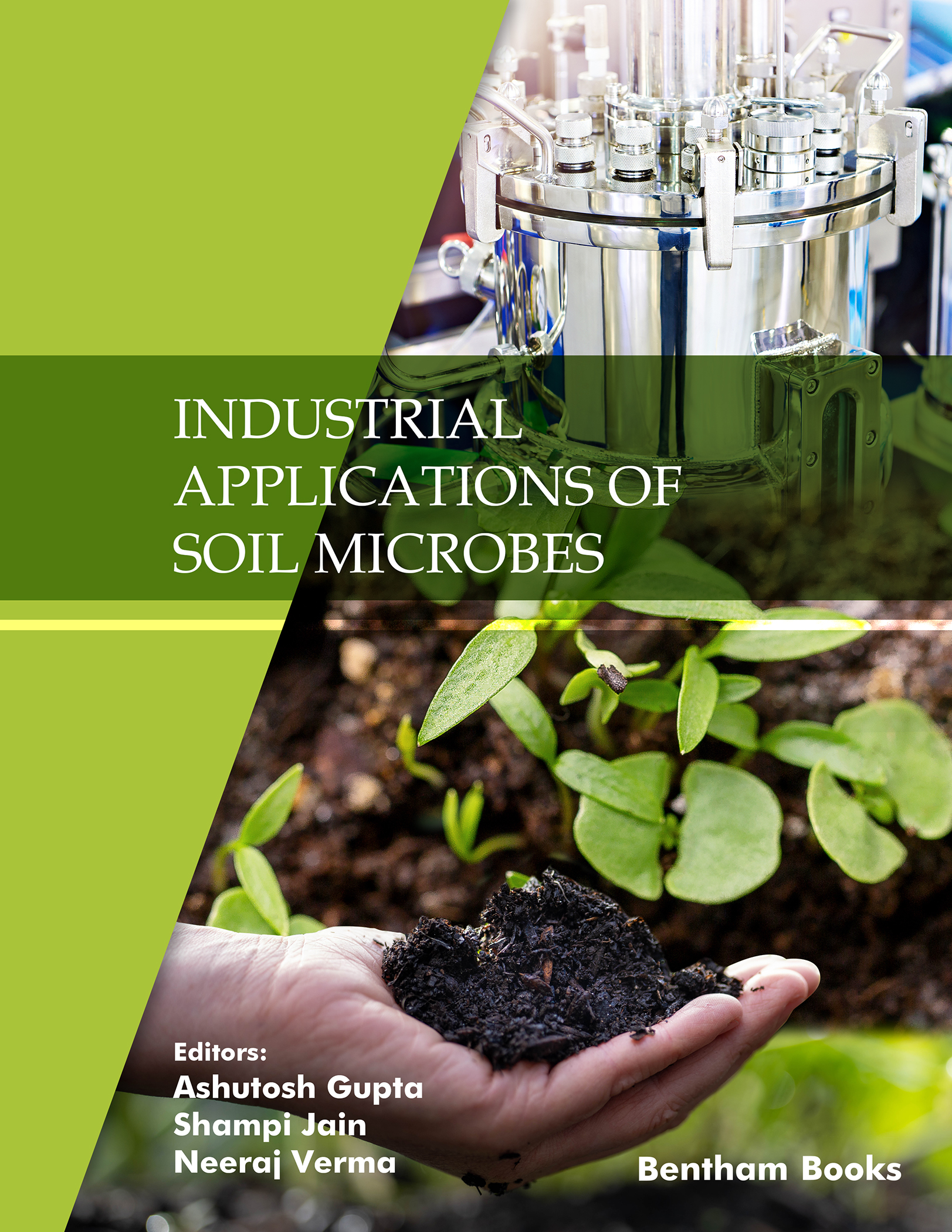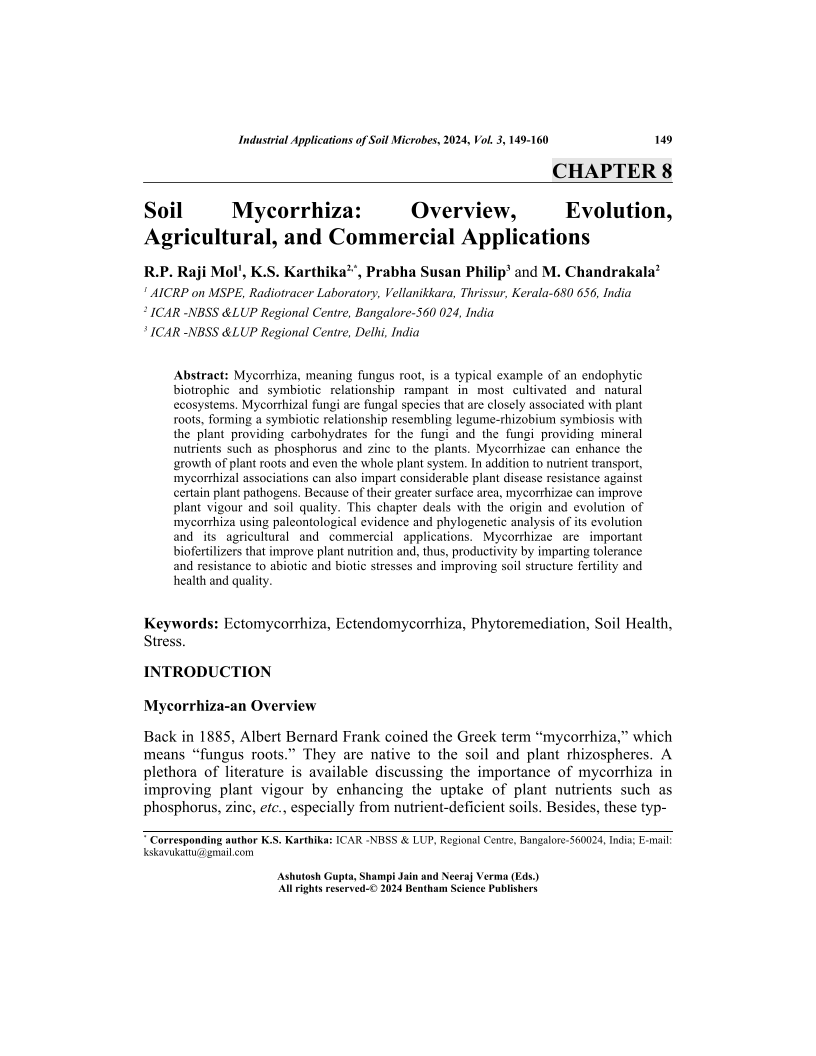Soil Mycorrhiza: Overview, Evolution, Agricultural, and Commercial Applications

- Authors: R. P. Raji Mol1, K. S. Karthika2, Prabha Susan Philip3, M. Chandrakala4
-
View Affiliations Hide AffiliationsAffiliations: 1 AICRP on MSPE, Radiotracer Laboratory, Vellanikkara, Thrissur, Kerala 680 656, India 2 ICAR -NBSS &LUP Regional Centre, Bangalore-560 024, India 3 ICAR -NBSS &LUP Regional Centre, Delhi, India 4 ICAR -NBSS &LUP Regional Centre, Bangalore-560 024, India
- Source: Industrial Applications of Soil Microbes , pp 149-160
- Publication Date: April 2024
- Language: English
Soil Mycorrhiza: Overview, Evolution, Agricultural, and Commercial Applications, Page 1 of 1
< Previous page | Next page > /docserver/preview/fulltext/9789815079753/chapter-8-1.gif
Mycorrhiza, meaning fungus root, is a typical example of an endophytic biotrophic and symbiotic relationship rampant in most cultivated and natural ecosystems. Mycorrhizal fungi are fungal species that are closely associated with plant roots, forming a symbiotic relationship resembling legume-rhizobium symbiosis with the plant providing carbohydrates for the fungi and the fungi providing mineral nutrients such as phosphorus and zinc to the plants. Mycorrhizae can enhance the growth of plant roots and even the whole plant system. In addition to nutrient transport, mycorrhizal associations can also impart considerable plant disease resistance against certain plant pathogens. Because of their greater surface area, mycorrhizae can improve plant vigour and soil quality. This chapter deals with the origin and evolution of mycorrhiza using paleontological evidence and phylogenetic analysis of its evolution and its agricultural and commercial applications. Mycorrhizae are important biofertilizers that improve plant nutrition and, thus, productivity by imparting tolerance and resistance to abiotic and biotic stresses and improving soil structure fertility and health and quality.
-
From This Site
/content/books/9789815079753.chapter-8dcterms_subject,pub_keyword-contentType:Journal105

